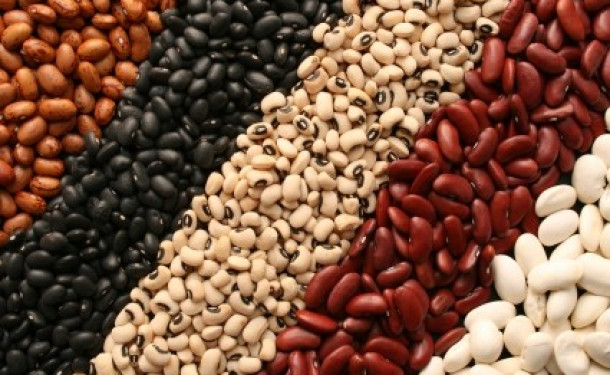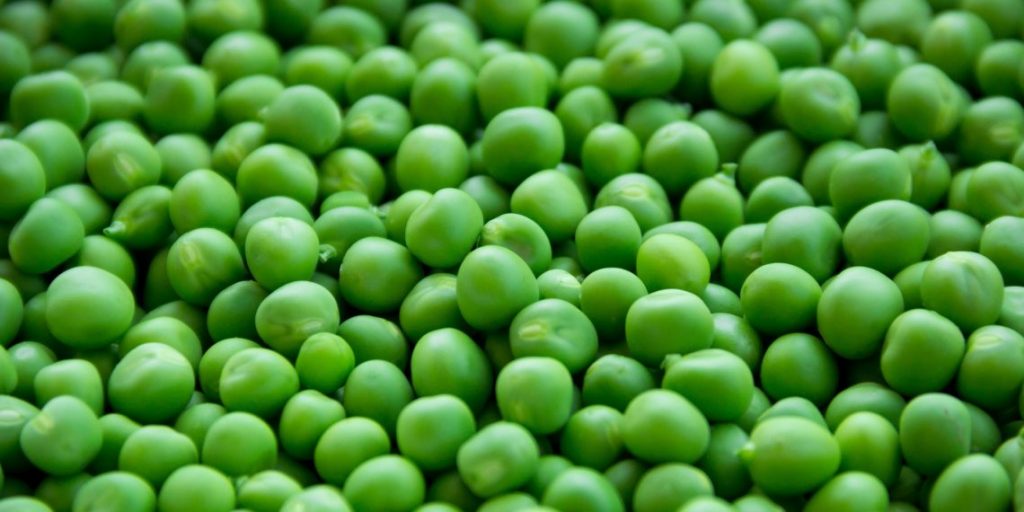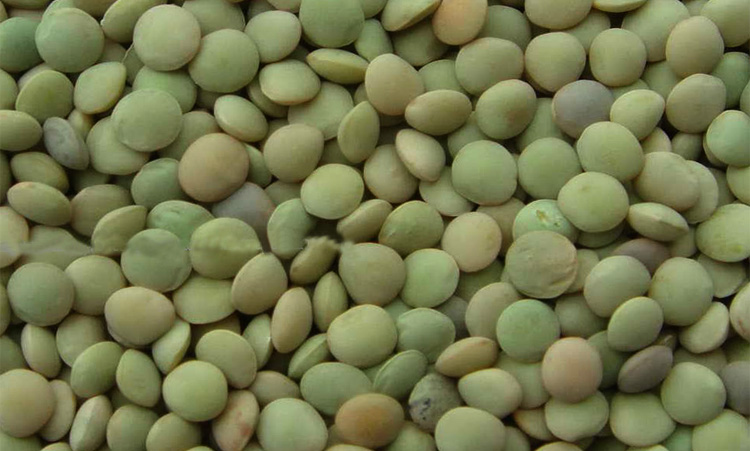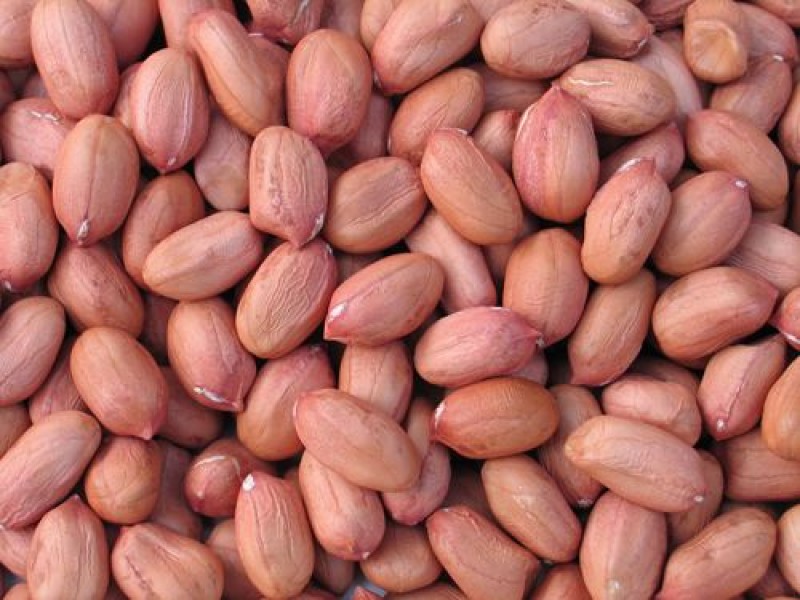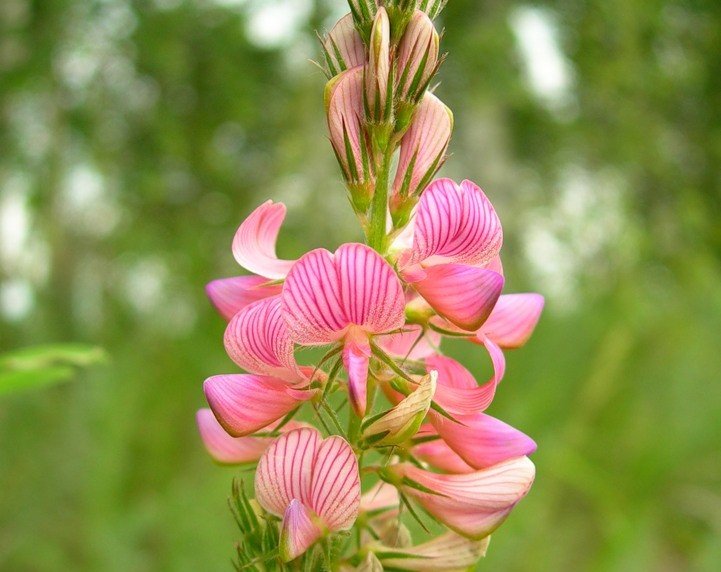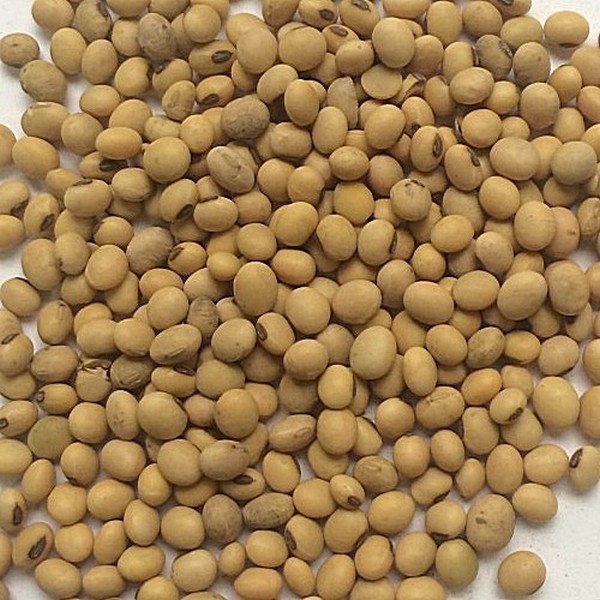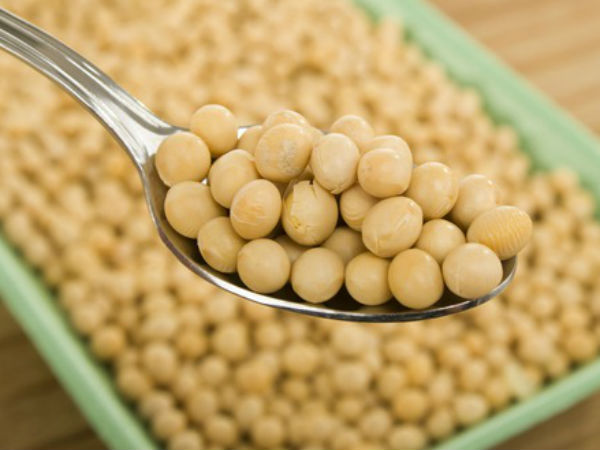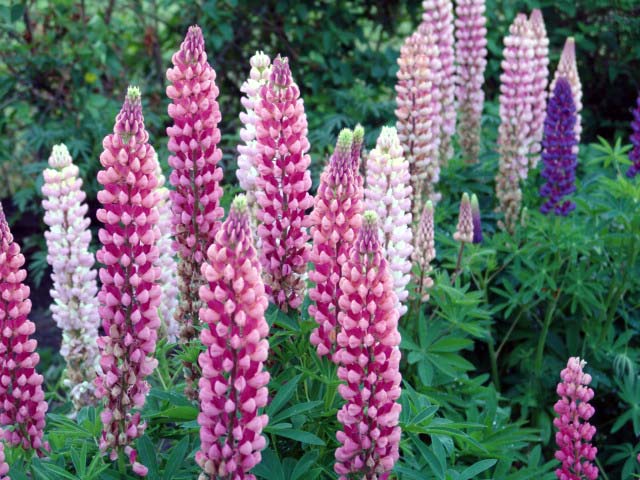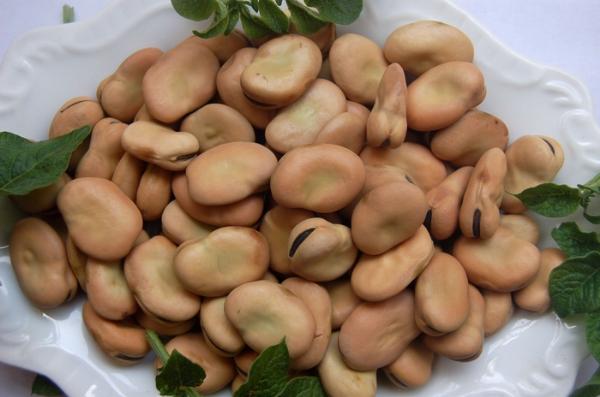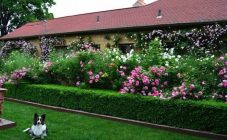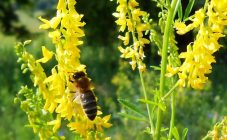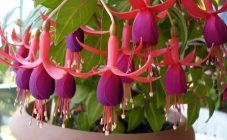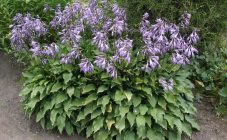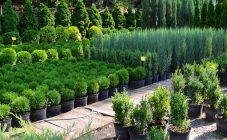Content:
The list of legumes is not that small. Some of them are valuable food products. In addition, due to the ability to fix nitrogen coming from the atmosphere, these herbaceous plants play an important role in soil reclamation (restoration).
Description of legumes
Legumes belonging to the dicotyledonous family are common in many countries of the world. What are beans? They have a rather complicated classification. In total, more than 700 species are described, which are represented by almost 20 thousand subspecies with great differences. Many of them are consumed by humans and used for livestock feed. In nature, representatives of this species can be found in the form of a tree, lianas and very miniature plants. They can live in the Far North, on mountain tops and in the arid desert.
The fruit of the crop is a bean, which can vary significantly in size depending on the species.
Here is an incomplete list of the most common legume plants:
- beans;
- peas;
- lentils;
- peanut;
- sainfoin;
- Vika;
- chickpeas;
- soy;
- lupine;
- fodder peas;
- broad beans.
The species, which grow in the form of a tree of the legume family and shrubs, are found mainly in the tropical and subtropical zones. Herbaceous varieties grow in temperate and cold climates. Vika can be found in the forests. Clover, rank, sweet clover have taken root in the meadows. The representatives of the steppe and semi-desert flora include licorice, camel thorn, astragalus. For decorative purposes, white and yellow acacia, sweet peas, and wisteria are often planted in gardens.
Common types
Not all gardeners plant legumes on their site for the purpose of eating, but in vain. These plants are unpretentious in care, often undemanding to the soil, but at the same time provide a lot of benefits to the body.
Beans
These beans contain important amino acids, minerals and vitamins. Vegetable protein of beans is perfectly absorbed by the body, there are also carbohydrates in its composition. Beans are believed to have many medicinal properties. It is used to make canned food, used in soups and second courses.
Peas
A nutritious, low-fat, high-protein dietary product. Peas are rich in fiber, minerals, sugars, starch. In green form it is used for freezing and canning. Yellow peas are used to make cereals.
Lentils
Contains the same set of nutrients. As for other legumes. Differs in a high content of folic acid. Lentils are used in the form of cereals for preparing first and second courses, and also used for livestock feed.
Peanut
The well-known groundnut contains a large amount of fatty oil used in cooking, cosmetology and industrial fields, therefore it is considered an oilseed crop. The fat content of nuts reaches 42%. The cake remaining after pressing is used as a feed additive for animals.
Sainfoin
Perennial herb valuable for agricultural activities. Its seeds and vegetative mass are used in livestock rations. In terms of nutritional value, sainfoin is not inferior to alfalfa. It is also a honey plant.
Vika
The vetch is considered one of the main plants of this family. It is used for food and animal feed. Vetch is suitable for fodder in the form of hay, grass meal, silage, and crushed grains.
Chickpea
It is also called chickpeas. Chickpeas are used to prepare a large number of dishes in Asian cuisine: they are fried, boiled, and canned. Chickpea beans are high in protein and fiber while being low in fat. The product is ideal for dietetic and vegetarian meals.
Soy
Soy is by far the most common legume vegetable grown in most countries. Its protein nutritional value is comparable to meat. Today, soybeans are used to produce meat substitutes, cheese, cottage cheese and milk. Due to its high nutritional value, the product is also included in the fodder base of livestock.
Lupine
Culture occupies one of the main places among forage plants. Its second name is northern soybeans. Lupine beans are added to animal feed. The plant is also used in the production of medicines and for the needs of the forestry. In agriculture, grass is used as a green fertilizer, which helps to grow environmentally friendly products.
Fodder peas
It has an agricultural purpose. It is used as a valuable supplement in the diet of animals. Can be used green or for silage preparation. The crop is considered a high-yielding crop, which increases its profitability.
Broad beans
Broad beans are widespread in Europe. It is an ancient agricultural crop that has long been cultivated for livestock feed. Agriculture uses grain, straw, green mass, silage. Due to their high nutritional value, beans occupy a significant share in the composition of feed components.
Popular varieties
Agricultural experimental stations in Russia were created with the aim of obtaining fruitful varieties, including legumes, which they continue to do to this day. Working together with the All-Union Research Institute of leguminous and cereal crops, breeders have created for each crop new varietal varieties, zoned for various Russian regions, in parallel with them, varieties of foreign selection are grown:
- The best varieties of bush beans are: Butter King, Sachs, Purple Queen, Dutch Nagano, Polish Bona, Sugar Triumph, Tatiana. Among the asparagus varieties, summer residents know: Golden nectar, Sweet courage, Panther, Zhuravushka. Of the climbing varieties in the middle lane are planted: Bluhilda, Turchanka, Borlotto, Harmony, Violetta, Lambada, Fatima. Popular varieties of grain beans: Shokoladnitsa, Ruby, Swallow, Ballada, Dream of the hostess. There are also novelties that are unusual in appearance or properties: Preto, Kidney, Black Eye, Rant.
- For those who want to grow green peas in the country, we can recommend the following varieties for open ground: Alpha, Ambrosia, Vera, Children's Sugar, Oscar, Troika, Salute, Pharaoh. You can choose from them both early and late peas, since the growing season of these varieties is different. Cultivation does not require special experience and care; even a beginner can plant peas.
- Lentil seed species vary in size and color. More often than others, red and green lentils are grown, less often exotic black and brown varieties are found. The following varieties have gained popularity in Russia: Petrovskaya Jubilee, Oktava, Anfia, New Moon, Tallinn-6, Penzenskaya-14, Belotserkovskaya-24, Dnepropetrovskaya-3. All of them belong to the green variety of culture.
- Peanuts are a thermophilic crop suitable for cultivation only in the southern regions of Russia (Rostov Region, Krasnodar Territory, Stavropol).Most of the peanut kernels are imported. Nevertheless, Russian breeders bred their own varieties: Krasnodarets-14, Valencia-433, Klinsky.
- Sainfoin is popular for its modern hybrids. More than 80 species of this plant grow in the wild. In the North Caucasus and Transcaucasia, the Transcaucasian sainfoin is grown. Many hybrid varieties have been bred on the basis of Sandy Sainfoin. The most common sainfoin is sainfoin, which ripens 2 weeks earlier than the main species, it is often used in folk medicine.
- Vika Posevnaya and Vika Shagnataya are often sown as green manure. This crop is hardy and widely adapted. The roots of the culture develop even in winter. The vetch is used for surface mulching of the soil with succulent greens and for embedding. Planting with crops such as rye, buckwheat, oats, and clover will be a good symbiosis.
- Chickpeas are grown mainly in China, India and Pakistan. In Russia, culture is practiced in warm regions (Krasnodar, Stavropol Territory). Among the popular varieties: Rosana with medium ripening periods, Krasnokutsky-36 (the most popular in Russia), Turkish Azkan, Zehavit - the fruit of Canadian selection. The culture is undemanding to the soil and to its predecessors. In the middle lane, early varieties of chickpea are recommended for planting.
- Soybeans are sown in late April - early May. Planting requires careful maintenance. For growing in central Russia, the following varieties are best suited: Yaselda, Viliya and Mageva. All of them are mid-season and high-yielding.
- There are quite a few varieties and types of lupine. First of all, it is subdivided into white, yellow, narrow-leaved and multi-leaved. Popular representatives of white lupine are Desnyansky, Degas, Gamma. Of the yellow lupins, Zhitomirsky, Demidovsky, Peresvet, Prestige, Fakel are often planted. Common representatives of narrow-leaved (blue) - Smena, Nadezhda, Rainbow, Crystal, Vityaz, Snezhet. Famous varieties of multifoliate lupine include Schloss Frau, Abendglut, Carmineus, Rubinkönig.
- Forage pea varieties differ in characteristics such as plant height, pod appearance, and forage volume. The most popular are Rostov, Zernogradsky, Omsky, Novosibirets, Sprut and Areal.
- Broad beans are considered one of the most productive crops. In Russia, the following varieties are recommended for use: Kudashevsky, Orletsky, Siberian, Uzunovsky, Istok, Maria. They are sown after cereals, potatoes and corn. Sowing is done early.
Benefit and harm
The health benefits of beans are well-founded. Legumes are often used in weight loss diets. The fiber they contain acts as a sorbent, and amino acids are involved in metabolic processes. Since beans and soy can successfully replace meat, they are recommended for vegetarian menus.
Beans, peas, lupines improve the quality of the garden soil and saturate it with nitrogen compounds and other useful substances. Vicu and sainfoin are often used as green manures, improving the structure and chemical composition of the soil. Many of these crops are melliferous and are planted near apiaries. Bees collect healthy and aromatic nectar from legume flowers.
Growing tips
What exactly applies to legumes is the lack of special requirements for the type, soil fertility and care, and they rarely get sick.The soil is prepared in the fall by digging it onto the bayonet of a shovel and applying fertilizers. In the spring, the soil is loosened and sowing begins. In the central regions, dry or soaked seeds are sown in the last decade of May. You need to soak the beans for no more than 15 hours, otherwise they will not germinate, being excessively saturated with moisture.
Young bushes are covered with a net to protect them from birds. The ripe fruit (bean) is removed in a timely manner, otherwise the formation of new pods is delayed. In addition, overripe fruits are easily crumbled during harvest and can become prey for bugs. It is best to plant legumes close to cucumber beds. Their relationship with each other benefits both cultures. Potatoes, corn, spinach, radishes, radishes will also be good neighbors.
All kinds of legumes are an ancient culture, without which it is impossible to imagine the menu of a modern man and the diet of many animals. Easy to grow, nourishing and healthy, they are worthy of attention and will always be grown on an industrial scale and in private farmsteads.
